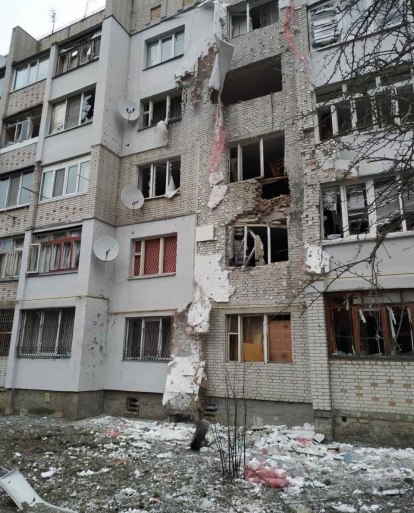Direct Relief Ships $10 Million of Aid to Ukraine
Aid Organization Specializes in Delivering Medical Supplies to Disaster Zones
By Nick Welsh | March 17, 2022

Since Russia first invaded on February 24, Direct Relief — the Santa Barbara–based international aid organization specializing in the delivery of medical supplies to disaster zones — has sent four shipments of medical supplies for relief efforts triggered by the war. Of those, three have arrived, and one is en route. The total weight of goods shipped is 52 tons and is valued at slightly more than $10 million. The last shipment is 25 tons. That brings the total value of all medical supplies directed to Ukraine since 2021 to $26 million. To put that in context, Direct Relief donated $2 billion in medical supplies worldwide last year. It anticipates raising $25 million in the next few weeks.
According to Katerina Takovska, a Direct Relief worker now operating out of Warsaw, Direct Relief has access to 13 warehouses in the region to which its supplies are being sent. From there, the materials go to two of the refugee centers on the other side of the border from the city of Lviv in western Ukraine. Takovska said about 20,000 refugees arrive a day but that no large, established refugee camps have emerged yet. Buses and cars from as far away as Spain, Estonia, and France, she said, show up and whisk the refugees away.

Most of the refugees she sees are children, women, and older people. Most, she said, remain only for about 24 hours.
Direct Relief is sending medical supplies specific for wartime needs, such as special drugs that speed the clotting processes for those dealing with severe bleeding. But it’s also sending everyday drugs, including over-the-counter painkillers and insulin for diabetics who would otherwise die because their access to medications has been cut off by the war. They also report a strong need for oxygen.
Takovska said she was much impressed by “the solidarity of the Polish government and the Polish people” in their response to the refugees. “It’s something to see — the number of volunteers who have shown up at the relocation centers — they come with hot meals, with support. I’m really proud to see people respond this way.”
Right now, Takovska said, the estimate is there are two million Ukrainian refugees. That’s in just two weeks. It’s expected the number could go as high as six million. According to the United Nations, as many as 12 million will need assistance. In addition, Ukrainian officials claim 63 hospitals have been damaged and five medical workers killed. By contrast, the World Health Organization has confirmed 18 attacks on hospitals, ambulances, and health workers.
Helping to put that in context, Tony Morain of Direct Relief noted that Yemen had four million refugees over a six-year period with 1,133 attacks on medical facilities since 1964. According to the United Nations, 20 million people need assistance. Syria had 6.6 million refugees since 2011 with another 6.7 million internally displaced. Between 2011 and 2021, there could have been as many as 600 attacks on medical facilities and health workers.
See directrelief.org. An earlier version of this story previously ran online here.
Catch up on the rest of our cover package, “Ukrainians Speak Out in Santa Barbara,” here.




You must be logged in to post a comment.